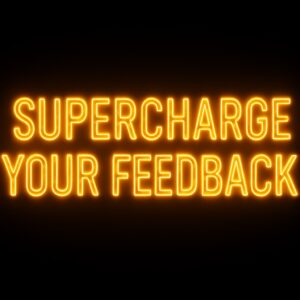Summary Insight:
AI won’t scale in your company without structure. This article shows why piloting tools isn’t enough—you must build a centralized AI brain, align your structure to it, and then lead like hell.
Key Takeaways:
- AI adoption follows a lifecycle—Pilot It, Nail It, Scale It—and each stage demands different leadership, structure, and strategy.
- Without a centralized AI brain and clear ownership, adoption will stall in experimentation and miss its transformative potential.
- You can’t skip steps. Nail the stage you’re in, then evolve—fast.
Two past coaching clients just reached out to ask me about structuring AI into their companies this week. This tells me it’s time to write an article, so here we go.
One of the principles behind Organizational Physics is that you always want to manage appropriately for the lifecycle stage of the project, product, business, or business unit. First you pilot it, then you nail it, then you scale it. AI adoption is no different.
The Pilot It Stage of AI Adoption: Using GPTs
Most companies are already in the Pilot It stage of AI adoption. Employees, especially innovators and early adopters, are using AI tools to be more productive, but the work itself has not fundamentally changed. This means that your social media marketing manager uses a GPT plug-in to create more social media posts, but their job remains fundamentally the same. It’s the same for software engineers, salespeople, and really any knowledge worker using a GPT. Discovering what different AI tools are capable of is fascinating and a bit unnerving. On their own initiative, the leading edge is researching and deploying their own AI tools and often bringing their findings back to the company.
Of course these discoveries raise plenty of questions and concerns. “Wait… what about data security?” “Wait… what about privacy?” “Wait… does this mean won’t have jobs?” These concerns are valid, yet every thinking person can see that the world has changed. If your company is going to survive and thrive, then it must quickly figure out how to nail AI adoption.
The Nail It Stage of AI Adoption: Building an AI Brain
My coaching clients on the leading edge of AI adoption are all on the same mission right now: to create and leverage their own internal, centralized AI brain. There will be many ways in which this “AI brain” will take shape, but its fundamentally about having a secure, internal chatGPT that has all proprietary corporate data and market information available to it in real time. There are multiple LLMs (large language models) integrated into the AI brain too. This allows employees to ask the system questions, and the centralized AI brain selects the right LLM based on the prompt, which results in improved decision-making and productivity for the company as a whole.
That’s the vision. It’s still a tall order due to issues such as permissions management, privacy, and worker retraining. However, those companies that can build and leverage robust vertical AI brains for their industry and company first will likely be the ones dominating this decade.
The Scale It Stage of AI Adoption: Deploying AI Agents
It is conceivable that AI becomes so powerful that your company no longer needs to employ as many humans. Fundamentally, each business function like sales, marketing, or engineering may still have a human “leading” it but the AI agent is doing most of the analysis as well as most of the actual work. AI adoption is in its infancy, but I’d say one talented individual with basic AI familiarity is already three to four times more productive than one without. As long as there are no major social or economic upheavals (famous last words), AI adoption won’t slow down or worsen. It will speed up and become even more powerful. In the near future, most of us will have very different “jobs,” and it’s hard to predict how it will all unfold.
However, one thing I do know is that your company won’t be able to scale AI if it hasn’t done the hard and necessary work of first piloting AI and then nailing its AI brain. You can go as fast as possible through each stage, and you must absolutely go faster than your competitors, but you can’t skip a stage of AI adoption. This takes us to structure.
How to Structure Your Company for AI Adoption
The first rule of structure is that if the strategy or lifecycle stage changes, you should change the structure. The question is, does AI adoption require a change in strategy for your business, or is AI enabling faster and better execution of your current strategy? If it’s the latter, where AI is an enabling technology for the existing strategy, then here is how I would think about structuring your business to support AI adoption:
- In the Pilot It stage of AI Adoption, you shouldn’t need a structural change. You may need a cultural change, but not a structural one.
- In the early Nail It stage of AI adoption, you may need a structural change if you don’t yet have a clean and elevated home for your AI adoption team.
- In the late Nail It to early Scale It stage of AI adoption, you will likely need to change structure to reap the full benefits of AI adoption.
Let’s take a closer look at what to do, and what not to do, in each of these stages.
What to Do During the Pilot It Stage of AI Adoption
During the Pilot It stage of AI Adoption, your mission is to learn and discover what’s possible with AI tools as an organization, and to turn AI detractors and laggards into AI converts. Usually, this is more of a cultural shift than a structural one.
One of the principle of Organizational Physics is that inertia can work for you or against you. This means that the current systems, processes, workflows, staff, and ways of doing things will act as a natural barrier against early AI adoption until you can get a critical mass of the company using it. How do you shift this inertia so that there is healthy AI adoption and the organization can learn?
Jason Baxter, CEO of Fort Capital and a former client of mine, shifted the culture to embrace AI adoption through an AI adoption contest amongst the company’s interns. He wisely chose to start the contest with interns because they don’t have a vested interest in maintaining the status quo. A business process breakthrough was to be found and documented using AI and presented live at an all-hands presentation. A significant cash prize was awarded to the winner.
Because of the publicity of the contest, all of the company’s managers witnessed how its most junior employees used AI tools to solve real-world business problems in just a matter of weeks. This quickly got everyone’s attention. As a result, more managers and employees started to think about how they too could do their own jobs better and faster using AI tools. I thought this was a simple but powerful way to help shift the culture to begin to better understand and embrace AI.
What to Do During the Early Nail It Stage of AI Adoption
The most important first step when embarking on the early Nail It stage of AI adoption is to define the objective for the stage. What does success look like one to three years from now? What’s in scope and what’s out of scope? For example, here is how I might flush out the “Adopt AI” initiative using the Top-Level OKRs Strategy format. This is NOT a project plan. I’m trying to create enough context to be directionally correct and place the right leader to drive this initiative forward:
What you must avoid during this stage is attempting to do too much, too fast. You must avoid allowing vested interests to prevent the adoption of AI, either because they don’t care, are too busy and overwhelmed with their current tasks, or see it as a threat to their job security. And you must avoid harming the brand or creating systemic risks to the business by adopting AI haphazardly.
Choosing the right leader, aka “Big Implementer” or “Single-threaded Owner,” who can navigate this challenge is mission-critical. You can overcome a lot of mistakes if you choose the right leader. If you choose the wrong leader, you’ll fail regardless of how many resources you throw at it . Let’s see what the right type of leader might look like.
Who Should Lead the AI Adoption Team?
Before you decide on a leader to lead the adopt AI initiative, I want to make it clear that the leader’s charter should only last one stage in the AI adoption lifecycle. Look at it like this. According to the Organizational Physics Strategy Map, if your company is currently in the Pilot It stage of AI Adoption, you need a leader who can take the company’s level of AI Adoption into the Nail It stage. You’d make a different choice if your company was already at the Nail It stage of AI Adoption and is now driving into full Scale It mode. To summarize, choose the right leader based on the stage.
With the current lifecycle stage and the big picture objectives in place, and assuming your company is now deep in the Pilot It stage of AI Adoption, I would choose a leader to drive AI adoption into the mid Nail It stage who fits this basic profile:
Choose a high energy, Producer-Innovator or entrepreneurial style leader. If your company is in a more regulated industry, then add a Stabilizer wing to this style (Producer-Stabilizer-Innovator). If your company has a more change-averse culture, then you can add a Unifier wing to this style (Producer-Innovator-Unifier). You can learn more about Producer-Stabilizer-Innovator-Unifier styles and their implications by clicking here.
Choose a background in technology and business enablement. This means that they have experience in leveraging technology to enable business goals. This leader can’t be a pure technologist or techno purist and hope to be successful. Nor can they be a business leader who doesn’t have battle scars driving forward technology-driven projects in their past. They need to be both business and technology savvy. You’ll find leaders like this in entrepreneurial web-based or AI-based start-ups, within technology and process innovation teams in larger companies, as well as within leadership roles of agile software development teams.
Choose an early adopter of AI. This last one is going to seem obvious but I still need to call it out. You want to find a leader who is already an avid user of Chat-GPT and other LLMs. They have already implemented AI tools on a small scale, in their day-to-day tasks and within their teams. They are passionate about the potential of AI, and even a bit scared about its broader social implications. In a phrase, “they get it.”
Who Should the AI Leader Report To?
My strong belief is that a strategic initiative owner should report directly to the CEO. Why? Because this is a strategic and mission-critical initiative. Few things are more important for the company to achieve.
Now, you may be in a situation where the CEO doesn’t feel technically savvy enough to have this individual be their direct report. In this case, at a minimum, the owner of the “Adopt AI” initiative must be on the Strategic Execution or Leadership Team. This is the broader, cross-functional SET team that meets weekly to drive forward the overall business strategy, not just the AI initiative.
Who Should Be on the AI Adoption Team?
You’ll want to keep the Adopt AI team small, 5 to 12 people max. This means that your minimum AI team makeup would include the heads of:
- AI Adoption to oversee the entire initiative
- Information Systems to oversee LLM integrations, network security, and overall architecture
- Data Science & Analytics to oversee data aggregation and model training
- Training and Skill Development to support workforce training and adoption
In addition to any AI and prompt engineering expertise, depending on your strategy and its implications to the business, there are some other key roles to consider for this team:
- Brand Risk?
If there was any risk that adopting AI would harm the brand, I would add the head of Brand Marketing and Communications to the AI team. As an example, Sports Illustrated recently created a bunch of fake writer profiles in order to generate AI content. It didn’t go well for what’s left of their brand. - Product Impact?
I would add the head of Product Development or head of Software Engineering to the team if AI affected the external customer-facing product in any way. It’s important to note, however, that the initiative that I’m describing for adopting AI is internal to the organization. Your head of Product Development or Software Engineering would need to lead a different initiative if your strategy calls for a big boost in external product performance through AI. - Compliance or Data Security Risk?
Should there be an impact on data security, privacy, or regulatory compliance, I would add the head of IT compliance to this team. As an example, a Big 5 Consulting firm recently halted the adoption of AI because its team was uploading proprietary corporate information to public LLMs. If your CIO or head of Tech Ops is already on this team, then they will already bring a perspective for high data security to the group.
How Should the AI Adoption Team Work Together?
While every company and AI strategy is different, it is hard to imagine a situation where the main objective during the Nail It phase isn’t to build an internal and centralized AI brain, and then to start streamlining and optimizing workflows within and across departments.
To accomplish this, the head of AI Adoption must further define what success looks like for AI Adoption one to three years from now. Next, by thinking backwards and working as a team, they must identify and execute on the right sequence of steps to achieve this week and quarter. The head of AI Adoption should meet frequently with their team to assign and follow through on accountabilities and adjust tactics according to new data.
What to Do During the Late Nail It to Early Scale It Stage of AI Adoption
Once the centralized AI brain has come online, then the next set of tasks is going to be to leverage that AI brain to significantly streamline and optimize internal and cross-functional workflow processes.
Here is where the actual work begins to change. For instance, I asked ChatGPT how AI can optimize the traditional accounting cycle:
Those are a lot of potential performance improvements just for one area, right? Now who is going to lead that transformation? Not your existing accounting team, right? Now multiply this problem/opportunity across every function in the business. Next, begin to consider all of the cross-functional dependencies (like those between sales, operations, and accounting today) and how those might be optimized. This is the focus of the late Nail It to early Scale It stage of AI adoption.
We may now need to replace the leader of this initiative with someone who is most suited to leverage the company’s new AI brain and all of the progress so far to bring greater throughput to the entire organization. It’s a different style and skill set than what it took to activate the AI brain in the first place. Always manage to the stage.
What Structural Changes Will Be Required for Full AI Adoption?
I am not certain how organizational structures will evolve post full AI adoption. It is safe to say that they will. However, I will add that attempting to drive forward AI adoption in a flawed or misaligned structure will be almost impossible. The inertia of the status quo will be too great to overcome. The companies that have a sound culture, structure, process, and leaders in place already are the ones who are well-poised to capture the AI opportunity. How you build those things is the art and science of Organizational Physics.
If you want your organization to make the leap to full AI adoption, consider applying to my Designed to Scale Coaching Program. It creates two to three years of organizational transformation in just three to four months, guaranteed.






